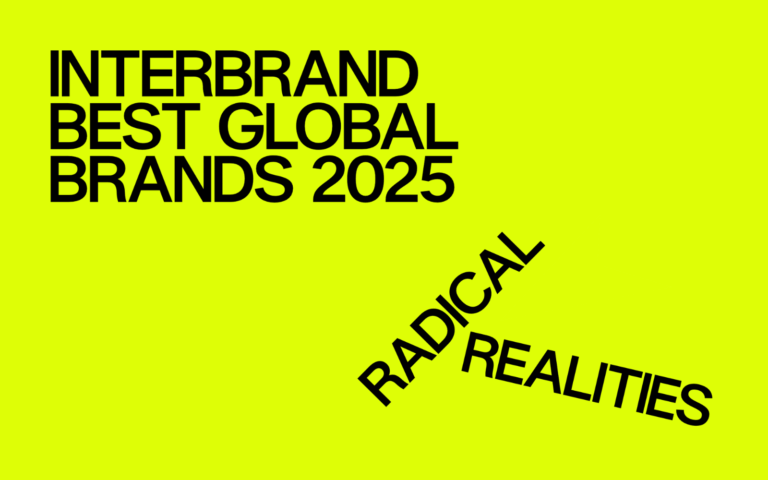We all do the same thing before buying anything these days. We research, compare, and solicit primary reviews and feedback.
Think, when did you last buy something without scrolling through reviews first? Or, can you even remember the last time you trusted a brand based on their ads alone?
Exactly, you probably cannot remember either. That’s because we have all changed how we make decisions, and your customers have too. Your brand is no longer that neat logo you spent weeks and months perfecting. Today, it’s what someone writes and posts about you after a poor customer service call. It’s also the story a happy customer tells to his colleagues and coworkers. It’s whether people actually care about what you do as a business.
With the marketing landscape shifting and branding 3.0 stepping in, the catchy radio jingles and billboard ads appear ancient now. A brand is no longer what we tell the consumer it is; it is what consumers tell each other it is. Businesses now demand to be more value- and purpose-driven, alongside establishing a deeper connection with customers. Branding 3.0 is how modern brands connect today, not just by what they sell or how they make people feel, but by what they stand for. It’s about having a purpose, showing real values, and making a positive impact in the world.
Take Patagonia, for instance. It’s easier for them to sell outdoor gear and make money, yet they fight for the environment and boldly advocate for it. Their customers don’t just buy from them. They are practically associated with their cause, showing a glimpse of what is expected from branding 3.0.
So, is it difficult for businesses to comply with branding 3.0 expectations? How can they thrive by adapting their branding strategies in this new environment?
Proven Systems for Business Owners, Marketers, and Agencies
→ Our mini-course helps you audit and refine an existing brand in 15 days, just 15 minutes a day.
→ The Ultimate Brand Building System is your step-by-step blueprint to building and scaling powerful brands from scratch.
Table of Contents
The Essence of Digital-First Branding
“If it is present digitally, it’ll anyway thrive”, as modern marketers will put it, is a suicidal thought. Digital-first branding differs fundamentally from traditional branding in that it is designed for the online world from the ground up and may further extend to offline spaces. It is primarily built for smartphones, apps, websites, social media, and even voice assistants.
Digital-first branding is characterized by high interaction and something that mostly works in real-time. It is essentially about satisfying the attention economy that we have developed into. A striking example of this is TikTok, which is designed to meet the demands of the attention economy through bite-sized, hyper-personalized videos that grab users’ attention almost instantly.
Core Principles of Digital-First Branding
Agility
Digital-first brands are quick to adapt, and that’s how they survive. They keenly monitor even the slightest moves in the market and user behavior and expectations, and adjust immediately to provide the best user experience and satisfaction. They are quick to adapt their messaging, looks, and strategy in real-time.
Authenticity
Understanding that new age customers expect brands to be real and relatable, digital-first brands avoid corporate-speak and stick to maintaining human communication and connection that sounds and appears genuine, with no strings attached whatsoever.
Customer-centricity
With marketing quickly shifting gears, customer-centricity hasn’t gone anywhere. Smart and sensible brands of today focus on what the customers need, want, and feel. They pay attention to what customers want and design experiences that are smooth, useful, and enjoyable.
Interactivity and engagement
This necessitates that brands interact with their customers. Digital-first brands are quick to respond to comments on social media, address grievances posted online, run polls, and create content that people enjoy sharing online.
Omnichannel presence
Brands in this category ensure a seamless and consistent brand experience across websites, apps, emails, and social media. This brings uniformity in how a brand is seen and anticipated by customers.
Modularity and scalability
Unlike traditional brands that often rely on fixed templates or print assets, digital-first brands are built modularly. This implies that components like logos, content blocks, or campaigns can be reused, adapted, and scaled quickly across channels and campaigns as needed.
These principles encourage modern-day businesses to be digital-first. While brands like Nike exploit digital media to generate critical touchpoints for enhancing user experience, Netflix also invests in creative storytelling and visual design that hold attention long enough to build emotional resonance. These companies exemplify a digital-first branding strategy, where the former utilizes emotionally charged and purpose-driven campaigns across a range of digital platforms. Netflix’s “Bandersnatch” for example, was an interactive, digital-first episode experiment that doubled as a clever marketing move, generating buzz and engagement online. In both cases, the brands lead with digital storytelling to form stronger, more personalized connections with audiences.
This surely couldn’t be possible without understanding what the audience wants or what your target market desperately needs. This clearly means understanding the digital ecosystem where your audience lives and delivering it straight away. From social media to virtual reality, every touchpoint is an opportunity to connect and tell your brand’s story.
Why Is a Digital-First Approach Needed
Businesses need to understand the crucial importance of being digitally present and well-positioned. Let’s see.
Reach
If there is anything contemporary businesses are most concerned about, it is their reach. By adopting a digital-first approach, you make it possible for your users to come from all corners of the world, rather than just a particular locality or city. It’s a large playing field where you dictate the rules of the game.
Engagement
If you can keep your audience hooked, it’ll convert into growth of all sorts. With a digital-first approach, businesses have the privilege of striking an immediate, two-way communication, turning users into consumers, and them into active participants. A healthy engagement between the business and the consumer is the foundation for a thriving business, positioning them well in the digital ecosystem.
Data
For obvious reasons data has become central to any business thriving in the modern age. When businesses go digital, they believe they can make optimal use of the user data available. Through this, they can personalise recommendations and adjust marketing campaigns accordingly. Since in today’s evolving retail landscape, every click, like, and share leaves a footprint, it tells a lot about your audience and their preferred choices, allowing for highly tailored experiences.
How To Build a Solid Brand Identity in the Digital Space
Visual Identity and Consistency
Ever noticed how some brands just look professional and unique, no matter how and where you see them? That’s visual identity at work— nailing a design language that makes them instantly recognizable in a digital-first world. It’s sensible for businesses to remember that in an increasingly competitive landscape, the best brands don’t just show up; instead, they show up consistently. That’s what makes them impossible to ignore, fairly recognizable, and unforgettably memorable. Think about McDonald’s golden arches, Nike’s swoosh, or Apple’s bitten logo, and ponder over the element of consistency they stick to.
In the digital space, this consistency across all platforms—right from your website to your social media profiles —streamlines visuals and builds strong recognition. Additionally, as users visit social media often, their subconscious gradually picks up the visuals, collates them, and establishes an image of the business or brand.
Voice and Tone
Brands have a peculiar voice and tone to which every consumer, consciously or subconsciously, listens. So, it’s about letting your brand do the talking in today’s digital world, knowing how you speak is just as important as what you say. Whether it’s witty, informative, or inspirational, your brand’s voice should echo across all your digital communications, making your brand feel like a friend or trusted advisor.
For instance, Apple’s voice and tone sound pretty simple, direct, and aspirational. It doesn’t waste words— its copy is as sleek as its design. Similarly, Nike’s voice and tone are concise, assertive, and powerful, urging people to push their limits.
Deep Emotional Connection
Great branding goes beyond visuals—it tells a story and evokes emotion. And it is the realization of this fact that modern-day marketers are trying to establish a healthy and amiable connection with their audience, which we today know as brand intimacy. Whether it’s nostalgia, excitement, confidence, or trust, a strong brand intimacy helps build long-term relationships with customers.
Brands like Airbnb succeed because they create a feeling of belonging, not just a service. Additionally, if you have been wondering all that while, why consumers queue enthusiastically in front of Apple stores just on the iPhone’s launch date, well, I guess it may have a connection with the sort of emotional connection the company has tried to build over the years.
Engagement Over Exposure
Contemporary brands must prioritize meaningful interactions over mere visibility, because it’s just not enough for your brand to be seen, it must be interacted with. Branding 3.0 shifts from transactions to relationships— where authenticity, shared values, and community drive loyalty over mere visibility. Here’s how businesses can nail it.
Interactive Campaigns
Using polls, quizzes, and live videos to engage your audience is a great way to gain a deeper understanding of user behavior.
User-Generated Content
Encouraging your users and fans to share their experiences with your brand is one of the most practical and sensible ways to get the word out for your business. It wouldn’t be wrong to say that, since every word is taken at face value, it is authentic marketing at its best – something that businesses must learn to leverage for branding.
Community Building
In today’s digital landscape, communities have become a rage, and several businesses have been utilising them pretty successfully. Create forums, groups, or hashtag movements where your brand is central to a community’s identity. A prime example is Patagonia, whose commitment to sustainability has built a community of environmentally conscious consumers – something that has immensely contributed to their overall brand image, and one that pays off heavily.
Adapting to Change- A Checklist For Every Aspiring Digital First Brand
The digital world is moving fast, thereby compelling businesses to adapt or perish. Prudent businesses, ambitious about getting recognised as a brand that sticks and stays in mind, must accordingly adapt their branding strategy. Here’s what to keep in mind.
Stay tech-savvy
The need to be tech-savvy has never been felt as much as in the present time. Technological breakthroughs, on the one hand, are disrupting traditional practices; on the other, they are paving innovative ways for businesses to capitalise upon. Whether it’s the rise of AI chatbots or the next big social media platform, brands-to-be must be ready to find ways of integrating new technologies into their branding. To say so, native advertising is one practice that can get the ball rolling for brands.
Listen to feedback
In a world where instant feedback has become commonplace, businesses should make way for it amicably and see how it can help improve. They may use it to tweak their approach, making their brand more responsive, relevant, and trusted.
Cultural relevance
What’s trending today might dramatically fail tomorrow. So it’s kind of important to keep your brand culturally relevant to ensure it doesn’t become outdated with the evolving digital landscape. This change, though, must never come at the cost of your overarching vision and brand identity. Strong brands change and grow over time, but keep their identity intact.
Be where it matters the most
Know where your audience and prospects spend time, and ensure your brand is visibly active on those media and platforms. This means choosing the right channels and showing up well.
Make content that counts
Today’s times demand content to be right for the audience to consume it the way they want. It should be helpful, interesting, and aligned with what your audience is searching for or scrolling through.
Be uniform and sound like one voice
Consistency is extremely important in branding. From your website to tweets to customer emails, it’s essential to ensure that your brand sounds consistent enough for people to trust, recognize, and associate with it.
Keep an eye on your conversion rates
Know if people are moving from just knowing your brand to actually taking action, such as signing up, buying, or referring. If not, tweaking your strategies can work really well.
Check the emotional connection
Try finding answers to how people feel when they interact with your brand online. Run regular sentiment analysis to see if the emotional bond is strong, weak, or if it’s missing entirely.
Measure what matters and build a community
Are people engaging, buying, and talking about your brand? Which demographics are in your target market? These can be important parameters to assess. This can be determined by tools like Google Analytics, marketing and social insights, and feedback loops, among others. Additionally, try to nurture digital relationships by engaging, responding, and providing value.
Evaluate CLV
Know how much a customer is worth to your brand over time. Assessing customer lifetime value (CLV) helps you plan more effectively, serve customers better, and invest wisely.
Strike a personal touch with users
By using data smartly to personalize experiences, such as product suggestions, tailored content, or friendly emails. Contemporary users love feeling understood, and therefore, their likelihood of sticking with your brand and returning frequently increases.
Stay fresh
Keep up with digital trends, but stay true to your brand. Post regularly, start meaningful conversations, join sensible community discussions, and find innovative ways to be part of the story.
Take Away
Branding 3.0 is about creating a living, breathing brand that grows with its audience.
It’s about being where your customers are, listening to them, providing them grounds for brand intimacy, adapting in real-time, and integrating digital media effectively in as many ways as possible.
If brands can do this, they won’t just survive the digital shift; they will likely lead it.










Well researched article. Digitalization has taken marketing to another level.
Stakeholders of any company should be aware of the points highlighted in this article for effective marketing in this digital first world.